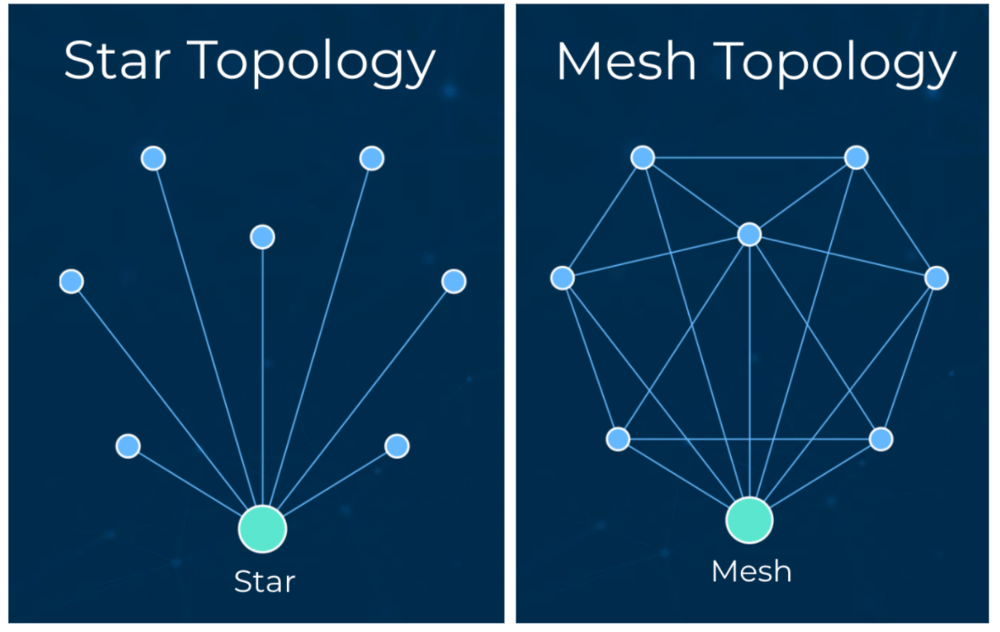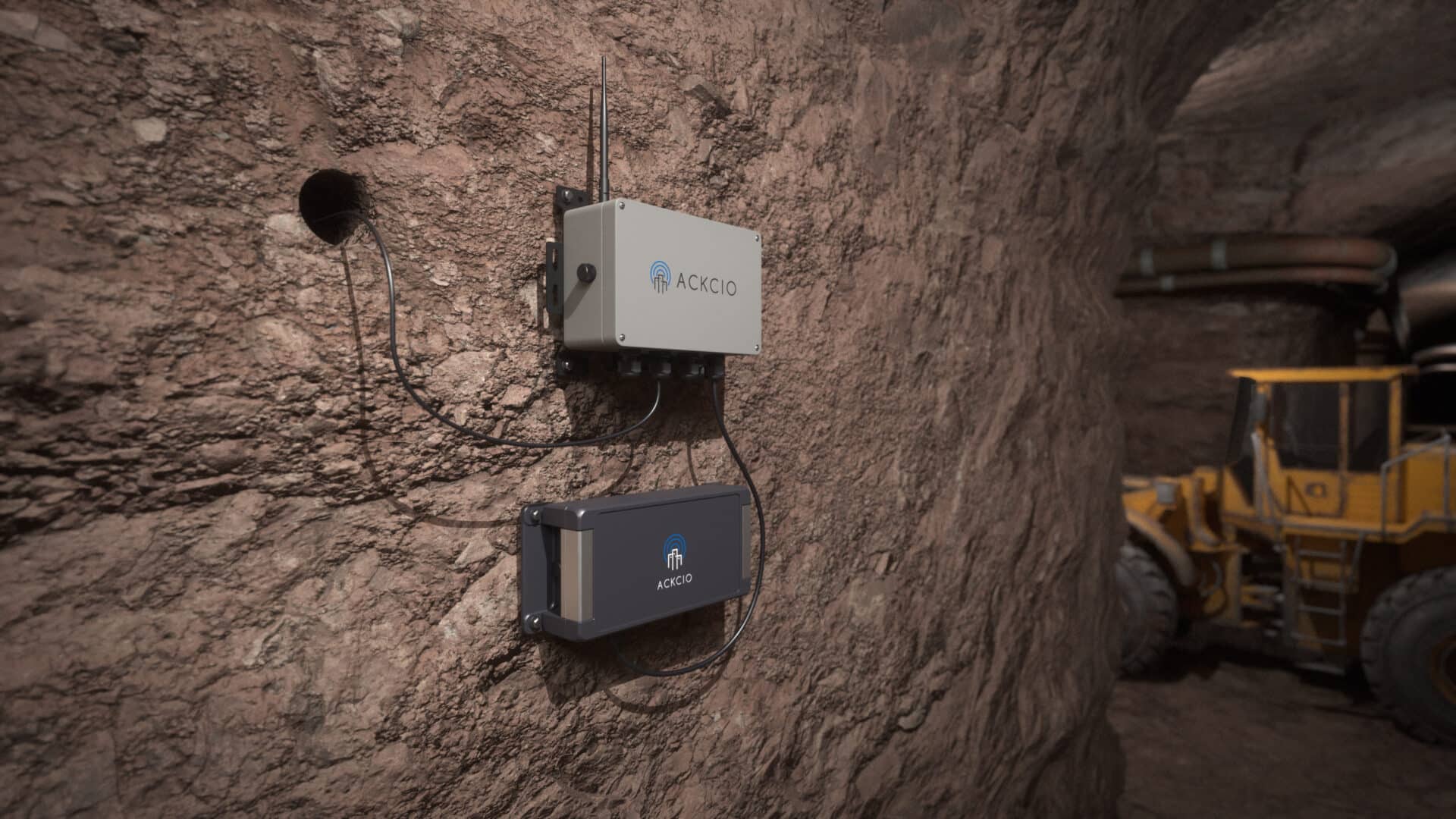Preventing Data Loss With a Resilient, Self-Healing Solution

There have been great strides in wireless, real-time data acquisition technology in the past decade, but, until recently, the problem of data loss continued to be a major concern.
Today, there’s another option that overcomes the challenges of obstruction, interference, site size and equipment failure that are the cause of most data loss.
The Ackcio Beam provides long-range data transmission for industrial applications. Its unique multi-hop mesh network ensures over 99% reliable end-to-end data communication. Its three-tiered approach blends networking advances and hardware and software features to create multiple layers of protection against data loss.
“There’s a lot of fault tolerance built-in,” says Mobashir Mohammed, who co-founded Ackcio five years ago. “Our solution doesn’t have a critical point of failure.”
Overcoming Obstructions
Mines, construction projects, railways and other underground sites are dynamic, busy environments where nothing stays the same or still for long. All this movement increases the risk of signal obstruction, one of the most common sources of data loss.
This risk is especially high among wireless solutions that use a star topology in which each node must connect directly to the central gateway receiver. If there’s something in the way, the signal is blocked, the data is lost.
Ackcio’s mesh topology, in which all of the nodes can speak to each other and the gateway, overcomes this limitation by offering many paths, rather than a single one, to send that signal. If the first route is blocked, the node is programmed to look for the best link to take the data to its final destination.
“That entire multi-hop, multi-route aspect eliminates the impact of obstruction on reliability,” Mobashir says. “The data is not lost. There are always multiple routes available. And the beauty is you don’t have to configure those routes. Our node will self-identify if it gets obstructed.”

The nodes are optimized for energy consumption, “waking up” at precise time intervals to see if there is data to carry forward. If not, it goes back to low-power mode.
This is possible due to the millisecond level of synchronisation precision that we could achieve across the multi-hop mesh network.
Ackcio’s multi-hop networking can also overcome data-loss challenges in sites too large to cover with a point-to-point communications network by using repeater nodes to relay data where other systems’ wireless communications are stretched.
“You can add more and more devices to extend the coverage,” Mobashir says. “It’s just like in your home; if you want to extend the Wi-Fi coverage, you can add a booster.”
Overcoming Interference
The rapid increase in the adoption of IoT technology for industrial applications has seen a corresponding rise in signal interference.
“This is a widespread phenomenon, as more and more companies are adopting all these wireless communications,” Mobashir says. “The signals are piling up.”
This risk is particularly acute in shared unlicensed spectrums, such as Sub-1 GHz, because they are so over-utilized and congested.
Spectrums are like multi-lane highways, with a set number of channels or lanes for data transmission. Ackcio Beam avoids the traffic jams of more common spectrums by operating in narrow-band, Sub-1 GHz channels, which offers up to 50 “lanes” to choose from at any time, practically eliminating the risk of a “collision,” and lost data.
“There’s a very low probability that there will be two devices in the same geography using the same lane at the same time,” Mobashir says. “Every single node can choose any of those 50 channels at any point in time independently.”
Designed Against Loss
Along with its mesh topology and sub-GHz communications channels, Ackcio’s engineers designed its system with layers of redundancy to prevent data loss.
On the hardware side, every Ackcio node comes with 8 MB of onboard memory to store data locally if the gateway is not available. While this is not unique, Ackcio goes further.
“What differentiates us is that this locally stored memory can automatically be synced with the gateway when communication is restored,” Mobashir says. “So unlike our competition, where users have to go on-site to collect that information physically, our devices synchronise in the background.”
Each node also has a built-in hardware “watchdog” mechanism. If the node stalls or freezes, the watchdog automatically reboots and recovers.
“It simply resets the device so it can start operating as if nothing happened to mitigate any form of disruptions,” Mobashir says.
And Ackcio Gateway has a unique low-power mode that kicks in if the main supply goes down. For up to four months, the receiver can receive sensor data which it stores in its onboard flash memory. When the power is restored, it automatically uploads the stored readings.
Meanwhile, Ackcio’s Snape edge software, which pushes the data to third-party servers, ensures that all sensor data that is not uploaded due to connectivity or server issues is saved.
“Our software keeps buffering it until infinity,” Mobashir says. With 16 gigabytes of data, that’s enough memory to store even the largest project’s data for five years.
“The moment the server is back and everything is online, our software will start synchronising, so it doesn’t lose data at any point in time,” he says. “All that information is stored in multiple locations. Every data loss gap is filled.”


